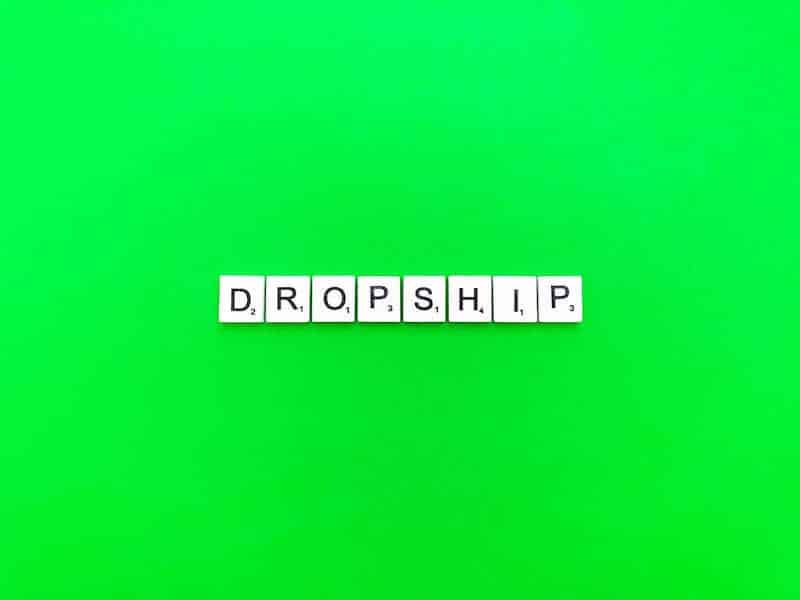This post was last updated on, October 2nd, 2023.
Are you looking to drop ship in Canada? Do you want to know the best drop shipping companies and how to get started with drop shipping within Canada?
If so, then this post is for you! In this article, we’ll answer all of your questions about dropshipping in Canada.
From what it is to whether or not it’s still profitable. We’ll also talk about the pros and cons of drop shipping and some tips on starting your own drop-ship business.
Without further ado, let’s dive into our discussion!
Table of contents
- What is dropshipping, and how does it work?
- The risks & benefits of dropshipping.
- Why start a dropshipping business in Canada?
- The pros and cons of starting a drop shipping business.
- Common questions about dropshipping.
- How to Start Drop Shipping in Canada (or almost anywhere, for that matter.)
- 13 Drop Shipping Suppliers to Work with for the Canadian Market. Plus five bonus Canadian Dropshipping Suppliers Who Sell Niche Products.
- Finding Success with Dropshipping: 11 Dropshipping Tips About Starting and Growing a Dropshipping Business.

Drop Shipping Canada: What is it, and how does it work?
Definition of dropshipping
Drop shipping is the process of fulfilling orders by purchasing items from a wholesaler and then selling it directly to the customer.
There are different types of drop shipping models, such as:
– print on demand
– marketplace eCommerce website (an extension of a business that doesn’t sell online)
– buying products in bulk and reselling them (product reselling, possible white label)
– product creation or ‘DIY kits’.
For more details about the different types of dropshipping available check out Shopify’s guide to dropshipping here.
What is drop shipping?
Dropshipping is a very popular eCommerce business model because it eliminates the need to keep products in stock.
This allows retailers to focus on their strengths, such as marketing and customer service resources while still profiting off of the product sales.
When you drop ship, your store is like a digital storefront that sells products to customers. You don’t have any inventory on-hand because all the product orders are sent directly from another company and delivered straight to the customer’s door!
How does dropshipping work?
When you set up your dropshipping store, you will link it with the wholesale company that offers drop shipped items and create what’s called an “e-commerce storefront”.
As soon as someone places an order through your website, they are transferred over to the wholesaler who fulfills and ships out their purchase.
Is drop shipping still Profitable in 2023?
The drop shipping model has been around since the 1990s, and it’s gained popularity in recent years because of its low upfront cost.
It’s not uncommon for a drop shipper to turn a profit in their first year while spending a few thousand on creating an eCommerce website.
However, dropshipping isn’t as profitable as it used to be due to increased competition in the marketplace and websites such as Amazon that offer drop-shipped items at lower prices than you can find elsewhere.
How profitable is DropShipping business?
How does 18.33% up to 50% more profit sound?
Nailing down an average on how much drop shippers can make is a challenge. But some successful dropshipping businesses are earning up to $100,000 per year.
Interesting Dropshipping Statistics You Need to Know in 2023
– According to Oberlo, global dropshipping is forecasted to reach $243.42 billion in 2023. It’s also the first year it has surpassed $200 billion, after a 23.7% increase from 2022’s numbers.
– 49.3% of consumers shop online because of Free Delivery. Squeezegrowth.com
– In 2017, 23% of all online sales—equal to approximately $85 billion per year—were fulfilled through the dropshipping model.
– 27% of Online Retailers Are Adopting Drop Shipping
– One-third of Amazon’s fulfillment sales are by drop shippers who are selling their products there.
For a more in-depth look at drop shipping stats visit this post here.
A Look at the Risks & Benefits of Dropshipping
Advantages of dropshipping
– Easy to start. Other than paying for and creating an eCommerce website and establishing social media accounts for your online store – there is very little else required in order to get started with a drop shipping business.
– No upfront costs. No need to pre-purchase stock or worry about storage; with a dropshipping business model, your supplier or suppliers handle those costs.
– Lower overhead and less capital required. Without the added expenses of inventory, storage and staff – you’re free to invest your profits into advertising, customer acquisition, and custom design for your online store.
– Easy to scale. With a drop shipping business, you can take advantage of eCommerce trends and capitalize on them quickly by being fast to market.
– Easy to test. With drop shipping, you’re not risking your own money on production, so if a product doesn’t sell – it’s easy to let it fade away and drop it!
– Easy to handle returns. With drop shipping, returns are handled by the supplier – not you.
– Wide selection of products to sell. With a drop shipping business, you can offer a wide variety of products from multiple suppliers all under one roof.
Disadvantages of dropshipping
– Frequent changes in product availability at wholesale suppliers. This can cause major setbacks for drop shippers who are heavily dependent on a certain item or supplier.
– Low margins. With drop shipping, you’re never getting the wholesale price on any product. The profit margins can be as low as a few cents per sale or up to low double digits. It’s a volume game.
– No control over product quality. Dropshipping suppliers are responsible for quality control, inventory, and shipping – not drop shippers. If a product delivered is damaged, you may not find out until it’s too late which could hurt your online reputation.
– Limited customization and branding. With drop shipping, your online store will always be someone else’s brand. And you’ll have limited options for customizing the customer sales journey, packaging, look or feel of the product – plus shipping times and shipping costs.
– No in-person customer service available. One of drop shipping’s biggest advantages is also one of its largest disadvantages. With drop shippers handling customer service and order fulfillment, you have limited opportunities to connect with your customers and market other products to them.
Why start a drop shipping business in Canada?
Canadian drop shipping is still a profitable online business but it has changed over the years due to the changing Canadian market.
It’s not as straightforward as it used to be before, which means drop shippers need to do a bit more homework when getting started.
Things You Need to Know About Drop Shipping in Canada: The Pros and Cons
The pros and cons of starting a drop shipping business in Canada are the same as in any country, except for the added stress of GST, HST, and other import taxes and duties.
Drop shipping in Canada Taxes & duties
Drop shippers in Canada are required to pay GST or HST on drop-shipped goods.
A 5% GST tax applies to most goods, except for prescription drugs, basic groceries, agriculture, and fishing goods.
Dropshipping businesses in Canada are also required to account for their revenue by keeping track of the total amount they sell on a monthly basis.
Taxes calculated at the point of sale are determined by the company’s address, as well as the customer’s address.
To start dropshipping goods from China or anywhere else outside of Canada, there are some other factors to consider as well. International taxes on imported items; custom duties for specific countries such as the USA; just to name a couple.
Before you start selling products and dropshipping in Canada, consult an accountant and your local tax authority.
More information on tax obligations associated with dropshipping is available at the Canada Revenue Agency’s website.
Common questions about dropshipping
Is dropshipping legal in Canada?
Yes, dropshipping is legal in Canada; however, you can only offer products that are legally saleable. Carefully research and adhere to any import or other restrictions that exist with regard to your product.
Visit the Canada Border Services Agency website for more information.
Do you need a business license to dropship in Canada?
Yes, drop shippers in Canada are required to have a business license. However, the type and requirements vary by province or territory.
Be sure to research your local government licensing requirements before you get started.
Do I need a website for dropshipping?
No, drop shipping businesses can operate with just an eCommerce platform like Shopify and not necessarily a custom online store.
What platform should I choose to start a dropshipping business on?
It’s important to build your drop shipping business on a platform that integrates with the most number of delivery services.
This will allow you to lower costs and offer more options when it comes to postage rates as well as handling returns from dissatisfied customers.
A great example is Shopify which allows drop shippers in Canada to sign up without any credit card or payment information required, whereas other platforms might ask for an upfront fee.
With ShipSimple’s shipping platform, you can also integrate multiple courier carriers such as Purolator, CanPar, Fedex, and many others all within one account, allowing for greater flexibility.
This is an excellent feature for Canadian online sellers who are looking to start their own dropshipping business.
How to Start Drop Shipping in Canada (or almost anywhere, for that matter)
1. Choose the right supplier
84% of eCommerce Retailers state that finding a dependable, reliable, and consistent manufacturer and supplier to work with is their number one struggle.
Many dropshipping businesses choose to work with Chinese manufacturers because they offer the lowest production cost.
However, there can be drawbacks, such as a language barrier, which may lead to miscommunication and important issues, which may lead to poor quality or late deliveries.
Canadians are a multicultural society, so finding suppliers in Canada is not an issue.
2. Find products to sell online
Start with a niche. Choose your market niche and identify what type of products you want to sell and what kind of store you would like to set up. Golf, home decor, gardening, clothing, and fashion are all popular categories to choose from.
3. Choose a platform to build your online store.
When choosing a platform for your dropshipping business, consider the following:
- What kind of drop shipper are you? Do you have an idea for a general store, or is it going to specialize in one area like fashion?
- What products would you want to sell? And what kind of store do you want to build?
- What are your technical capabilities? Will you or someone on your team be able to update your platform or will you have to outsource this? Platforms like Shopify {link} make setting up a dropshipping business easy. They even offer a free trial to help you get started.
- What is your budget for starting an online business? Will you invest in a custom website, or will you use a ready-to-use templated solution?
- What kind of supplier do you want to work with? Do you want to work with an International supplier? A Canadian dropshipping company that specializes in made-in-Canada products. Does it matter? Would you prefer it if your wholesale supplier had a warehouse in Canada or close to your home or business?
A note on drop shipped product pricing
Drop ship pricing usually means lower than retail prices, and you might be able to drop your price a bit as well.
This is because drop ship companies typically don’t have the high markups that retail stores do, and they’re not paying for a physical storefront.
Drop shipping in Canada can be profitable if you make sure to find drop shippers who will offer competitive pricing on products so that your profit margins stay healthy. Always look at prices per item and not just the drop ship fee.
4. Choose a brand name for your online business and secure your domain name.
Securing your domain name signals that your newly-started dropshipping business is all but a reality. Once you’ve chosen your platform and purchased your name, the real work begins.
Begin inputting product details like name, weight, tax, shipping cost, etc.
Once you’re happy with the design and functionality, you’re ready to launch, sell and promote!
13 Drop Shipping Suppliers to Work with for the Canadian Market
Drop shipping is a great way to start an online business, especially in the Canadian market. The ability to sell products without investing in inventory or managing fulfillment can be very attractive for entrepreneurs just starting out.
But finding reliable dropshipping suppliers that offer good quality products at competitive prices can be a challenge. That’s why we’ve put together this list of 13 top drop shippers that are perfect for working with the Canadian market.
With these companies as your partners, you’ll have access to thousands of products and excellent customer service so you can focus on growing your business without worrying about supply chain management.
Disclaimer: ShipSimple does not endorse or receive any affiliate commissions for the suggestions above. The list above was created by industry research on the best dropshipping suppliers and customer reviews on the top Canadian drop shippers.
– Gelato (Print on demand)
– G Furn
– Syncee
– Printful (Print on demand)
5 Canadian Dropshipping Suppliers Who Sell Products for Different Niches
Beyond the Rack – Canadian dropshipping supplier with men’s and women’s fashion, beauty, and self-care products, plus a handful of other general store categories available.
Slaite POD – A print-on-demand supplier dropshipping products like T-shirts, sweatshirts & hoodies, and jackets that integrates with Shopify.
Natures Essential Garden – This website is a one-stop shop for aromatherapy products and other natural and organic items.
Golf Stuff – The name says it all. As a Canadian supplier specializing in golf-related products, you can trust them to supply and deliver. Whether you’re looking for apparel or accessories, they’ve got everything you need related to golfing.
Dreamhug – This supplier is in the business of supplying Canadian customers with cozy blanket covers to keep them warm. They also offer weighted blankets, wearable blankets and covers.
For more niche market Canadian dropshipping suppliers, visit Niche Drop Shipping.
Finding Success with Dropshipping: 11 Dropshipping Tips About Starting and Growing a Dropshipping Business
The drop shipping industry is a competitive one, and it’s not always easy to stand out. But, through hard work and dedication, you can be successful.
1. Switching Suppliers
Even if it seems like switching suppliers to find the lowest price is a good idea, you could ultimately be investing your money in an unreliable supplier.
If you’re looking to sell products within Canada, you may want to consider using a Canadian dropshipping business.
Working with someone locally who specializes in dealing with Canadian sellers may alleviate some of the stresses of having to deal with International manufacturers and suppliers and delayed shipments.
2. Choose a Proper Niche
A niche can make or break your business. A highly saturated market can make it difficult to compete for high-selling products. If something is popular and selling well, take note. That might be the exact reason not to sell it.
3. Create a consistent content marketing strategy.
A successful drop shipping business needs to invest in content marketing. If done correctly, you will be able to increase conversions and grow your company.
One of the most impactful ways to grow a business is through content marketing. Content marketing is creating and distributing content that will be of interest to your target audience so that you can serve and sell to them.
It’s important to have a consistent strategy. Stay on topic for the types of content you create, and decide in advance when it should be posted, how often, and where it should live on your website.
For successful dropshipping companies, this means having an email list (so people can subscribe), and blog posts with helpful tips, guides, and industry news.
Their Facebook page should be filled with engaging content that will keep followers coming back for more.
Furthermore, drop shippers need to optimize their website, so it is responsive (will adapt to different screen sizes), have a mobile-friendly design, offer secure checkout options, and include user reviews.
4. Customer service is a key principle in running a drop shipping business.
With drop shipping, all a business needs to do is provide customer service and marketing, so it’s important to have a team that can handle this.
Drop shippers should have 24/48 hour response times for customer service inquiries and answer all emails within one day to avoid losing customers, as well as provide helpful product descriptions with clear photos so shoppers know exactly what they are buying before making the decision to buy.
Be honest about where your products are coming from and how long it will take to receive them.
Communicate often and frequently, especially if you are experiencing any shipping delays or issues (internal link to shipping nightmares blog post)
5. Look to ads for product inspiration and to show you what is and isn’t selling.
It often starts with just one killer product – the downside is, of course, finding that product.
Hitting the dropshipping jackpot often comes from one explosive product. However, it takes a bit of work to find that single winning idea to make it big.
To stay competitive, be observant of what’s popular in the industry. Take note to see which trends are about to explode and jump on them as quickly as possible.
Look for comments, tags, shares, and other social signals to help make your choice easier.
6. Marketing is the key to success in a dropshipping business.
Successful drop shipping is dependent on mastering the marketing aspect of your business.
It’s important to create a marketing strategy and stick with it.
Marketing is about telling your own unique story in the best way possible so that customers will be compelled by what you have to offer.
Be thoughtful of who your target audience is, where they hang out online, and how exactly you are going to reach them.
Having a presence on social media is also important. Be consistent, engage with your audience, and always maintain a healthy balance between serving and selling to them.
7. Decide which paid and/or free marketing channels to focus on.
When marketing for your brand, it’s important to focus on one platform at a time.
Just like you can’t be everywhere all the time, neither are your customers. This is especially true if you don’t have an army of employees or an agency supporting you.
Set your goals and budget, and evaluate what’s working for you regularly so that you can continue on the path to success.
Audit your ads, be willing to experiment with different content, and change up your strategies.
8. Take Care of the Legal Aspects of Your Dropshipping Business
Do you sell other companies’ goods through an online store or e-commerce platform like Etsy?
Did you get any help with writing up contracts or incorporating yourself as a corporation to protect yourself legally when starting out?
Licensing your own product doesn’t just mean registering for things like trademarks; if you’re not careful, what might look harmless while small could wind up costing thousands later down the line.
9. Be Patient
As a drop shipper and entrepreneur, overnight success doesn’t come easily.
You need to work hard and go through setbacks before you can understand what actually works for your business and what doesn’t.
Hype about how easy it is to reach success on the internet and any expectations you may have about it should be replaced with hard work and a little bit of patience.
10. Expand Your Customer Base and Sell Globally
With drop shipping, you don’t need to have a physical location or inventory.
But that doesn’t mean your customer base is limited to just one country!
Drop ship globally and start reaching out internationally so you can find new markets and grow your audience of buyers across the world.
11. A/B Test Early and Often
Marketing online is at its best – a guessing game.
A/B testing allows you to test out different, sometimes radical changes on your audience and determine what works.
It’s also a great way to find the most effective marketing channels as well as learn which aspects of drop shipping are worth investing your time in (and those that aren’t).
Drop shipping is still profitable when done correctly. You just need to provide customer service, have an attractive product that people want, and be responsive on social channels etc.
Carefully consider the best marketing channels for you and your business, and don’t overlook your legal and financial obligations before taking the plunge.
Patience is key to success in drop shipping as well as many other things in life!
If you feel like a drop shipping business is something for you, make sure to do your research first.
Understand the risks that come with drop shipping so that you can figure out if this type of business model will work for you or not.
Whether it’s weighted blankets, DIY candle kits, or one-of-a-kind art prints – dropshipping can and still is a profitable business to be in.





